Around the World
May/June 2022
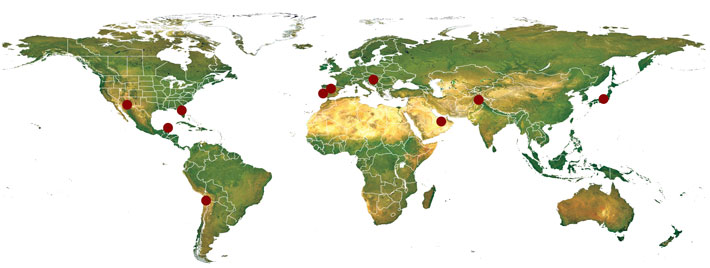

-
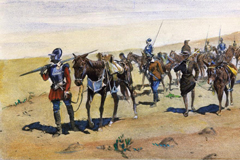 ARIZONA: Artifacts recovered from a site in Santa Cruz County may provide new information about Francisco Coronado’s 1540 expedition through the American Southwest. Starting in Mexico, the Spanish conquistador eventually traveled as far north as Kansas, although the exact route he took is debated. Hundreds of newly found objects, including parts of crossbows and other European weaponry, might be linked with Coronado and his men, suggesting they may have passed through southern Arizona along the Santa Cruz River.
ARIZONA: Artifacts recovered from a site in Santa Cruz County may provide new information about Francisco Coronado’s 1540 expedition through the American Southwest. Starting in Mexico, the Spanish conquistador eventually traveled as far north as Kansas, although the exact route he took is debated. Hundreds of newly found objects, including parts of crossbows and other European weaponry, might be linked with Coronado and his men, suggesting they may have passed through southern Arizona along the Santa Cruz River. -
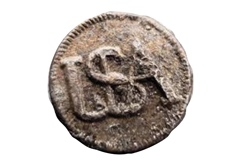 FLORIDA: When conservators cleaned an encrusted button found in a 1782 shipwreck off the coast of St. Augustine, they were stunned by the 3 letters it displayed: USA. That might not ordinarily have caused surprise, but experts knew that when the ship went down, it was carrying British soldiers and loyalists fleeing the Revolutionary War. It’s possible that the button was taken from a Continental soldier’s uniform by a supporter of the crown on the battlefield and saved as a war token.
FLORIDA: When conservators cleaned an encrusted button found in a 1782 shipwreck off the coast of St. Augustine, they were stunned by the 3 letters it displayed: USA. That might not ordinarily have caused surprise, but experts knew that when the ship went down, it was carrying British soldiers and loyalists fleeing the Revolutionary War. It’s possible that the button was taken from a Continental soldier’s uniform by a supporter of the crown on the battlefield and saved as a war token. -
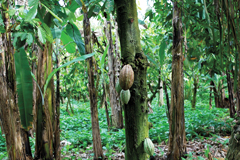 MEXICO: Cacao was an integral part of Maya life and was grown in well-guarded sacred groves. However, since much of the Yucatán’s hot, arid environment is unsuitable for cultivation of cacao trees, archaeologists have wondered how they grew so bountifully. Soil samples taken from several cenotes, or sinkholes, near Maya sites revealed the presence of caffeine and theobromine, biomarkers of cacao. The cenotes may have provided both humidity and shade, creating the perfect microclimate for the trees.
MEXICO: Cacao was an integral part of Maya life and was grown in well-guarded sacred groves. However, since much of the Yucatán’s hot, arid environment is unsuitable for cultivation of cacao trees, archaeologists have wondered how they grew so bountifully. Soil samples taken from several cenotes, or sinkholes, near Maya sites revealed the presence of caffeine and theobromine, biomarkers of cacao. The cenotes may have provided both humidity and shade, creating the perfect microclimate for the trees. -
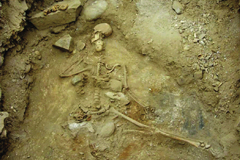 CHILE: Modern forensic techniques have determined that a prehistoric fisherman who was buried along Chile’s northern coast 5,000 years ago suffered a tragic drowning accident. Wear marks on his bones indicate that he spent most of his life rowing a boat and throwing a harpoon. Analysis of the man’s bone marrow revealed tiny marine fossils and sediments that could only have entered his system if he had inhaled a fatal amount of salt water shortly before his death.
CHILE: Modern forensic techniques have determined that a prehistoric fisherman who was buried along Chile’s northern coast 5,000 years ago suffered a tragic drowning accident. Wear marks on his bones indicate that he spent most of his life rowing a boat and throwing a harpoon. Analysis of the man’s bone marrow revealed tiny marine fossils and sediments that could only have entered his system if he had inhaled a fatal amount of salt water shortly before his death. -
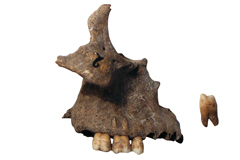 PORTUGAL: Researchers were surprised to learn that a man who was buried in an 8,000-year-old shell midden actually died only around 350 years ago. His remains were discovered in 1930 in the Tagus Valley among much older Mesolithic skeletons. Recent DNA and isotope analysis of the man’s teeth indicate that he was from Senegambia in West Africa and was likely brought to Portugal as an enslaved person. His interment in a prehistoric necropolis may suggest that the site was revered by the local African community.
PORTUGAL: Researchers were surprised to learn that a man who was buried in an 8,000-year-old shell midden actually died only around 350 years ago. His remains were discovered in 1930 in the Tagus Valley among much older Mesolithic skeletons. Recent DNA and isotope analysis of the man’s teeth indicate that he was from Senegambia in West Africa and was likely brought to Portugal as an enslaved person. His interment in a prehistoric necropolis may suggest that the site was revered by the local African community. -
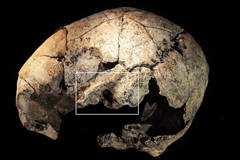 SPAIN: An elderly woman who lived around 5,300 years ago is believed to be the earliest known recipient of ear surgery. Her skull was found at the megalithic tomb known as the Dolmen of El Pendón with two perforations cut into the mastoid bone behind each of her ears. The painful procedure was performed with stone tools in order to treat an infection that could have led to deafness. Because her bones had begun to regenerate, it’s likely the woman survived the ordeal.
SPAIN: An elderly woman who lived around 5,300 years ago is believed to be the earliest known recipient of ear surgery. Her skull was found at the megalithic tomb known as the Dolmen of El Pendón with two perforations cut into the mastoid bone behind each of her ears. The painful procedure was performed with stone tools in order to treat an infection that could have led to deafness. Because her bones had begun to regenerate, it’s likely the woman survived the ordeal. -
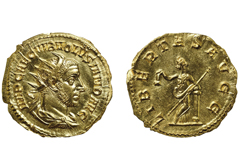 HUNGARY: A rare gold coin known as a double aureus was unearthed at a Roman site in southwestern Hungary. It was minted during the reign of Volusianus, who co-ruled with his father from A.D. 251 to 253. The front features the young, bearded emperor wearing a crown of rays, while the back depicts the goddess Libertas, the personification of freedom. Because Volusianus was only in power for a short time—he was assassinated by his own troops—few surviving coins bear his likeness.
HUNGARY: A rare gold coin known as a double aureus was unearthed at a Roman site in southwestern Hungary. It was minted during the reign of Volusianus, who co-ruled with his father from A.D. 251 to 253. The front features the young, bearded emperor wearing a crown of rays, while the back depicts the goddess Libertas, the personification of freedom. Because Volusianus was only in power for a short time—he was assassinated by his own troops—few surviving coins bear his likeness. -
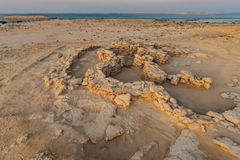 UNITED ARAB EMIRATES: The remains of round stone buildings on Ghagha Island west of Abu Dhabi are the oldest ever found in the country and surrounding region. Radiocarbon dates estimate that the ruins are 8,500 years old, making them 500 years older than the previously recorded earliest structures, which were found on Marawah Island. Although its climate today is dry and unwelcoming, Ghagha Island would have been much more hospitable thousands of years ago, when it was likely home to a small Neolithic community.
UNITED ARAB EMIRATES: The remains of round stone buildings on Ghagha Island west of Abu Dhabi are the oldest ever found in the country and surrounding region. Radiocarbon dates estimate that the ruins are 8,500 years old, making them 500 years older than the previously recorded earliest structures, which were found on Marawah Island. Although its climate today is dry and unwelcoming, Ghagha Island would have been much more hospitable thousands of years ago, when it was likely home to a small Neolithic community. -
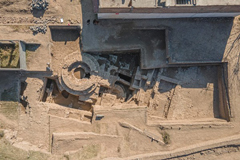 PAKISTAN: One of the world’s oldest known Buddhist temples was unearthed atop the ancient acropolis of Barikot in the Swat Valley. The complex, which is preserved to a height of more than 10 feet, dates to the 2nd century B.C. It was built on a platform and features a cylindrical structure, a small stupa, and a number of small rooms. The site has a more than 3,000-year-long history and was purportedly besieged by Alexander the Great in 327 B.C.
PAKISTAN: One of the world’s oldest known Buddhist temples was unearthed atop the ancient acropolis of Barikot in the Swat Valley. The complex, which is preserved to a height of more than 10 feet, dates to the 2nd century B.C. It was built on a platform and features a cylindrical structure, a small stupa, and a number of small rooms. The site has a more than 3,000-year-long history and was purportedly besieged by Alexander the Great in 327 B.C. -
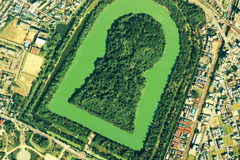 JAPAN: The monumental burial mounds known as kofun are said to contain the remains of Japan’s semilegendary early emperors, who ruled between the 3rd and 7th centuries A.D. Because they are considered sacred, access to the mounds is limited, and archaeologists still know very little about them. However, a new study used high-resolution satellite images and revealed that all the entrances to the keyhole-shaped tombs are aligned with the rising sun. Japanese tradition holds that the first emperors were direct descendants of the sun goddess Amaterasu.
JAPAN: The monumental burial mounds known as kofun are said to contain the remains of Japan’s semilegendary early emperors, who ruled between the 3rd and 7th centuries A.D. Because they are considered sacred, access to the mounds is limited, and archaeologists still know very little about them. However, a new study used high-resolution satellite images and revealed that all the entrances to the keyhole-shaped tombs are aligned with the rising sun. Japanese tradition holds that the first emperors were direct descendants of the sun goddess Amaterasu.
Advertisement
IN THIS ISSUE
Features
Secrets of Scotland's Viking Age Hoard
The World of Egyptian Demons
Letter from the Bay Area
Digs & Discoveries
Cradle of the Graves
Together Forever
Canyon of the Ancestors
First Falconer
Kunga Power
Golden Lucky Charms
Dragon Fire-Eater
Membership Has Its Privileges
Saving Seats
Off the Grid
Around the World
A Revolutionary War shipwreck, early Buddhism in Pakistan, ancient ear surgery, and following a conquistador to Kansas
Artifact
A curse for every occasion
Advertisement

Recent Issues
-
 May/June 2024
May/June 2024
-
 March/April 2024
March/April 2024
-
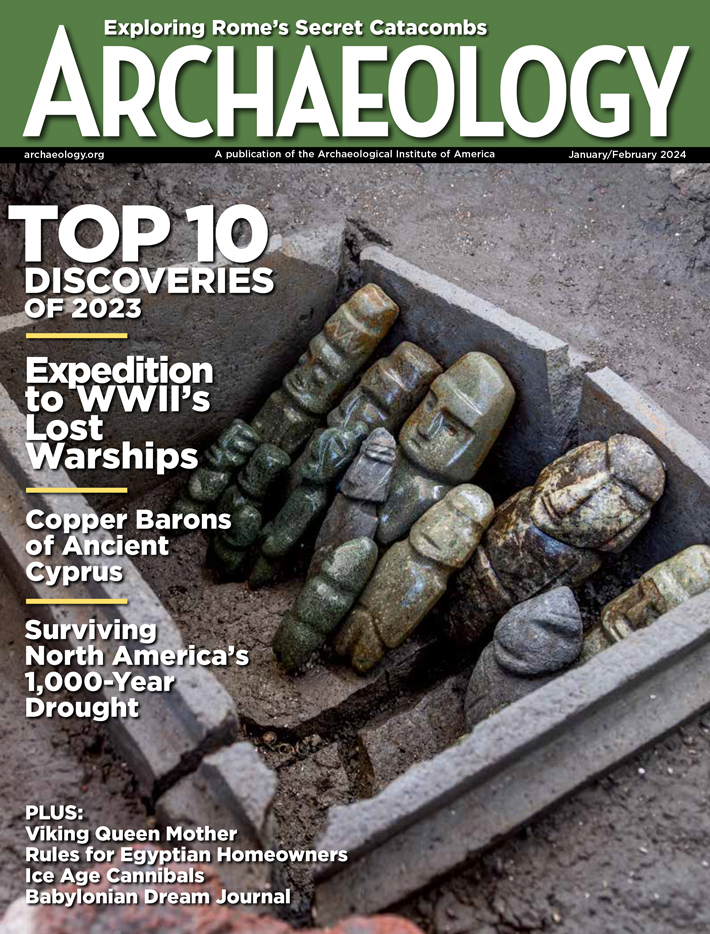 January/February 2024
January/February 2024
-
 November/December 2023
November/December 2023
-
 September/October 2023
September/October 2023
-
 July/August 2023
July/August 2023
-
 May/June 2023
May/June 2023
-
 March/April 2023
March/April 2023
-
 January/February 2023
January/February 2023
-
 November/December 2022
November/December 2022
-
 September/October 2022
September/October 2022
-
 July/August 2022
July/August 2022
-
 May/June 2022
May/June 2022
-
 March/April 2022
March/April 2022
-
 January/February 2022
January/February 2022
-
 November/December 2021
November/December 2021
-
 September/October 2021
September/October 2021
-
 July/August 2021
July/August 2021
-
 May/June 2021
May/June 2021
-
 March/April 2021
March/April 2021
-
 January/February 2021
January/February 2021
-
 November/December 2020
November/December 2020
-
 September/October 2020
September/October 2020
-
 July/August 2020
July/August 2020
-
 May/June 2020
May/June 2020
-
 March/April 2020
March/April 2020
-
 January/February 2020
January/February 2020
-
 November/December 2019
November/December 2019
-
 September/October 2019
September/October 2019
-
 July/August 2019
July/August 2019
-
 May/June 2019
May/June 2019
-
 March/April 2019
March/April 2019
-
 January/February 2019
January/February 2019
-
 November/December 2018
November/December 2018
-
 September/October 2018
September/October 2018
-
 July/August 2018
July/August 2018
-
 May/June 2018
May/June 2018
-
 March/April 2018
March/April 2018
-
 January/February 2018
January/February 2018
-
 November/December 2017
November/December 2017
-
 September/October 2017
September/October 2017
-
 July/August 2017
July/August 2017
-
 May/June 2017
May/June 2017
-
 March/April 2017
March/April 2017
-
 January/February 2017
January/February 2017
-
 November/December 2016
November/December 2016
-
 September/October 2016
September/October 2016
-
 July/August 2016
July/August 2016
-
 May/June 2016
May/June 2016
-
 March/April 2016
March/April 2016
-
 January/February 2016
January/February 2016
-
 November/December 2015
November/December 2015
-
 September/October 2015
September/October 2015
-
 July/August 2015
July/August 2015
-
 May/June 2015
May/June 2015
-
 March/April 2015
March/April 2015
-
 January/February 2015
January/February 2015
-
 November/December 2014
November/December 2014
-
 September/October 2014
September/October 2014
-
 July/August 2014
July/August 2014
-
 May/June 2014
May/June 2014
-
 March/April 2014
March/April 2014
-
 January/February 2014
January/February 2014
-
 November/December 2013
November/December 2013
-
 September/October 2013
September/October 2013
-
 July/August 2013
July/August 2013
-
 May/June 2013
May/June 2013
-
 March/April 2013
March/April 2013
-
 January/February 2013
January/February 2013
-
 November/December 2012
November/December 2012
-
 Sep/Oct 2012
Sep/Oct 2012
-
 September/October 2012
September/October 2012
-
 July/August 2012
July/August 2012
-
 May/June 2012
May/June 2012
-
 March/April 2012
March/April 2012
-
 January/February 2012
January/February 2012
-
 November/December 2011
November/December 2011
-
 September/October 2011
September/October 2011
-
 July/August 2011
July/August 2011
-
 May/June 2011
May/June 2011
-
 March/April 2011
March/April 2011
-
 January/February 2011
January/February 2011
Advertisement






